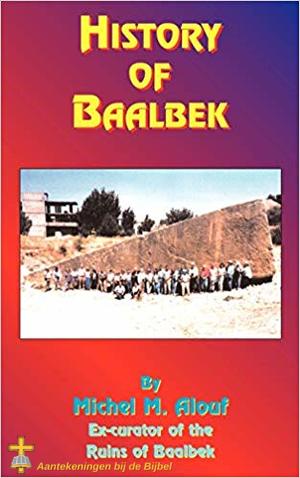
welke resulteren in allerlei aantekeningen.

At one time, the worldwide fame of the ruins at Baalbek drew huge numbers of tourist crowds. In the present day, a trip to Baalbek is extremely difficult and considerably dangerous. Luckily, the former curator of the site, Michel M. Alouf, made his years of research available in this heavily illustrated work.
The massive multi-level platform found at Baalbek, is believed by some scientists to be one of the "only" prediluvial sites that survived the flood. At a much later time, it became very well known to the Romans, who desecrated the site to build their magnificent temples. In fact, the largest Roman temples ever built were not in Rome, but were found at Baalbek.
One of the most puzzling aspects of the ruins at Baalbek are the 1,000-plus ton stones which formed part of the original temple platform. A recent visit to the site allowed inspection of these large stones, and of the one at the quarry (pictured on the cover), where new measurements were taken which revealed the largest and most precisely cut stone at the Trilithon may weigh in at over 1,500 tons. The largest modern cranes in the world would have difficulty in lifting, let alone moving, these massive limestone blocks, and yet there they sit. These stones, and many other aspects of this important historical site are described at length in this handy reference guide.
| Titel | History of Baalbek |
| Auteur | Michel M. Alouf |
| Uitgever | Book Tree |
| Jaar Verschenen | 1999 |
| Taal | Engels |
| Pagina's | pp. 200 |
| ISBN13 | 9781585090631 |
| Onderwerp | Baalbek, Heliopolos |

Zie de huisregels welk commentaar wordt opgenomen!